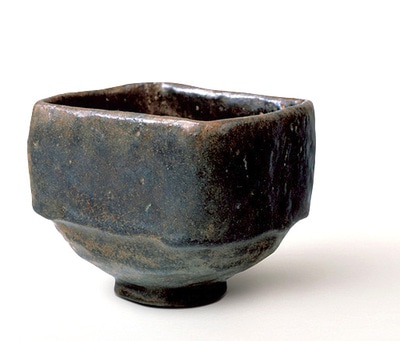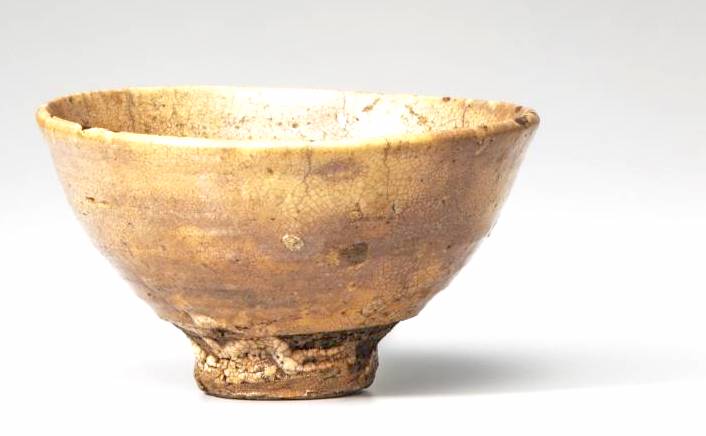| Between April 2017 and June 2017, the National Museum in Ueno, Tokyo held a beautiful exhibition: Chanoyu, the Arts of Tea Ceremony, the Essence of Japan. The exhibition was arranged chronologically from the introduction of the Chinese tea ceremony in Japan around the 12th century, to modern times. While the history was explained, the focus was on the objects used for tea ceremony [1]. What particularly interests me here, is the different styles of objects, in particularly tea bowls, that have been used for the tea ceremony throughout the centuries: karamono, koraimono and wamono. Karamono (唐物) refers to artworks and objects that were imported from China and collected by the Japanese upper class. These fine objects were displayed by aristocrats at gathering, including during tea ceremonies. The term karamono mostly refers to objects produced during the Song (960 - 1279), Yuan (1271 - 1368) and Ming (1368 - 1644) Dynasties. These tea bowls have simple and open shapes but very sophisticated glazes. Pieces regarded as national treasures are of the tenmoku or yuteki (oil-spot) tenmoku type [2]. These iron-glazes produce deep and dark colours with subtle effects. Koraimono (高麗物) is associated with objects imported from Korea, produced during the Yi Dynasty and in particular during the Joseon period (1392 - 1897). These pieces are more rough, thicker, plain. The throwing lines are visible and the shapes are sometimes asymmetrical. | |
One piece regarded as one of the best of its kind is of the Ido (井戸茶碗) type. This kind of pottery was used by commoners in Korea. That these kind of bowls were chosen for the tea ceremony in Japan is a dramatic shift from the refined Chinese potteries.
Wamono (和物) describe items that were produced in Japan. These seem to combine the elegance of the Chinese karamono with the imperfection of the Korean koraimono. Under the influence of Murata Juko, Takeno Joo and Sen No Rikyu, famous tea masters, ceramics produced in Japan were increasingly used for the tea ceremony. Sen No Rikyu would not only carefully select ceramics from Korea or China, he would also create pieces to match his philosophy. His collaboration with Chojiro, first of the Raku family is a good example of this [3]. These three tea masters devised the wabi-cha (わび茶): the Japanese tea ceremony as we know it today.
If you are interested in learning more about the Japanese tea ceremony, this page lists English books covering both the historical and technical aspects of it.
[1]. A brief introduction of the Chanoyu exhibition on the Tokyo National Museum website.
[2]. A list of the pieces exhibited at the Chanoyu Exhibition at the Tokyo National Museum in 2017.
[3]. See my previous article on the Raku family.
Wamono (和物) describe items that were produced in Japan. These seem to combine the elegance of the Chinese karamono with the imperfection of the Korean koraimono. Under the influence of Murata Juko, Takeno Joo and Sen No Rikyu, famous tea masters, ceramics produced in Japan were increasingly used for the tea ceremony. Sen No Rikyu would not only carefully select ceramics from Korea or China, he would also create pieces to match his philosophy. His collaboration with Chojiro, first of the Raku family is a good example of this [3]. These three tea masters devised the wabi-cha (わび茶): the Japanese tea ceremony as we know it today.
If you are interested in learning more about the Japanese tea ceremony, this page lists English books covering both the historical and technical aspects of it.
[1]. A brief introduction of the Chanoyu exhibition on the Tokyo National Museum website.
[2]. A list of the pieces exhibited at the Chanoyu Exhibition at the Tokyo National Museum in 2017.
[3]. See my previous article on the Raku family.



